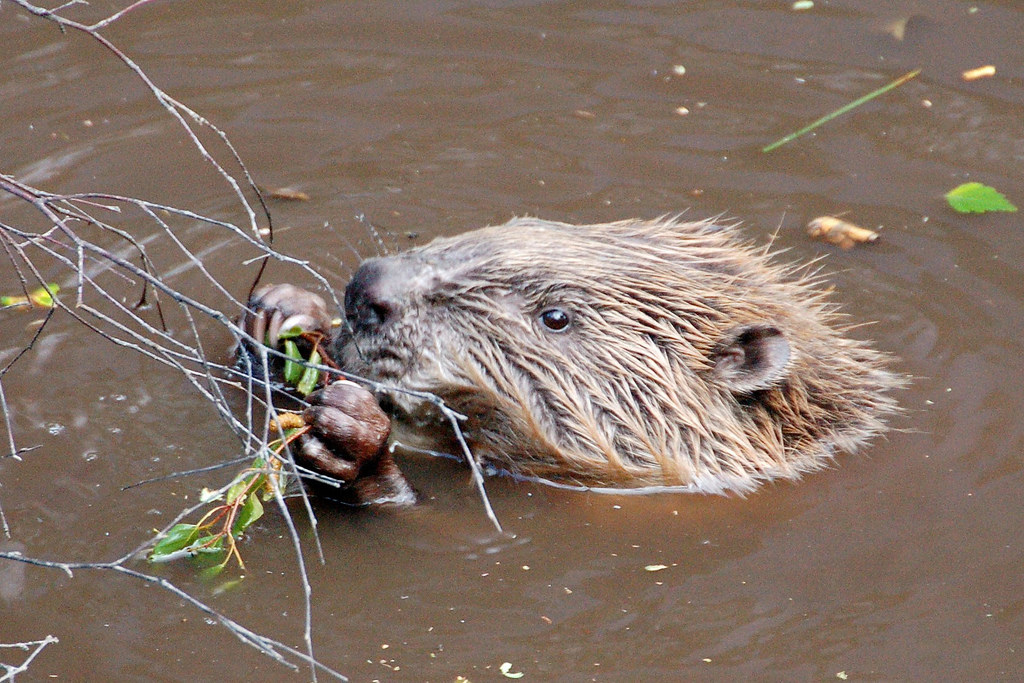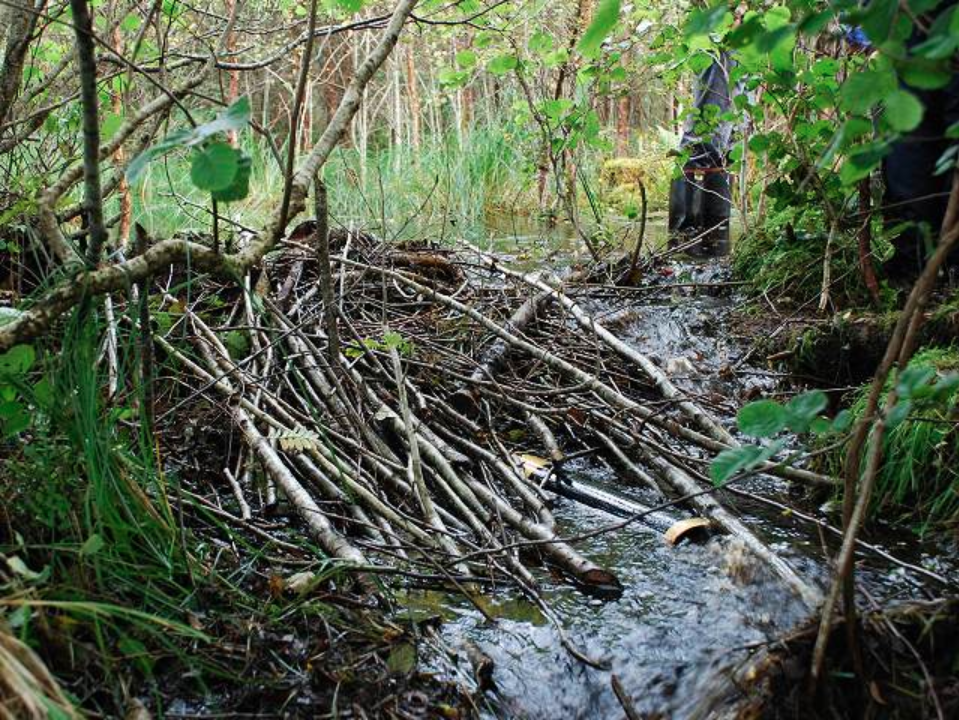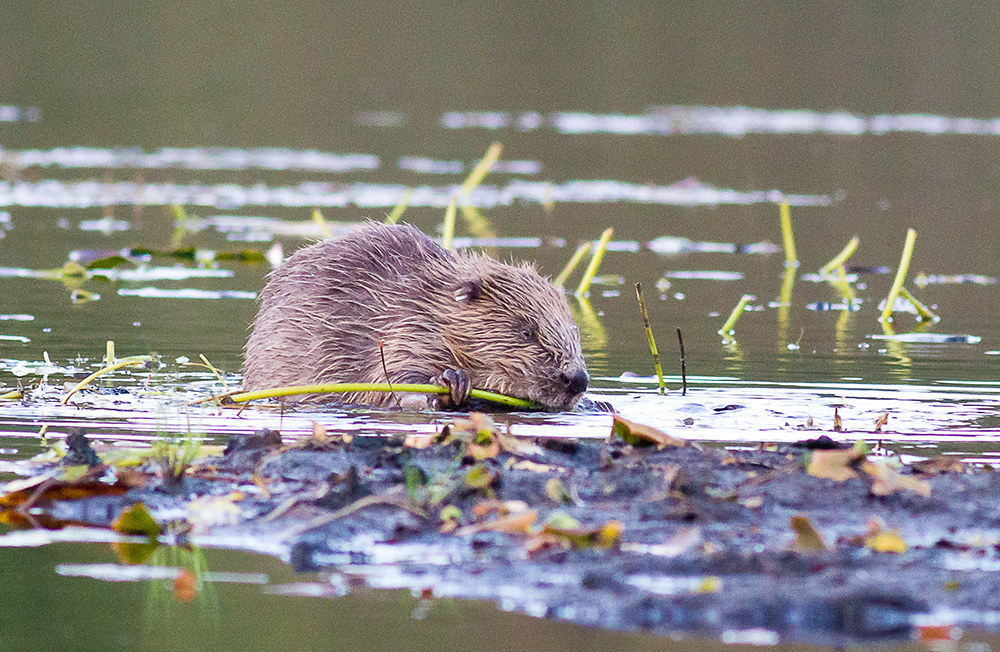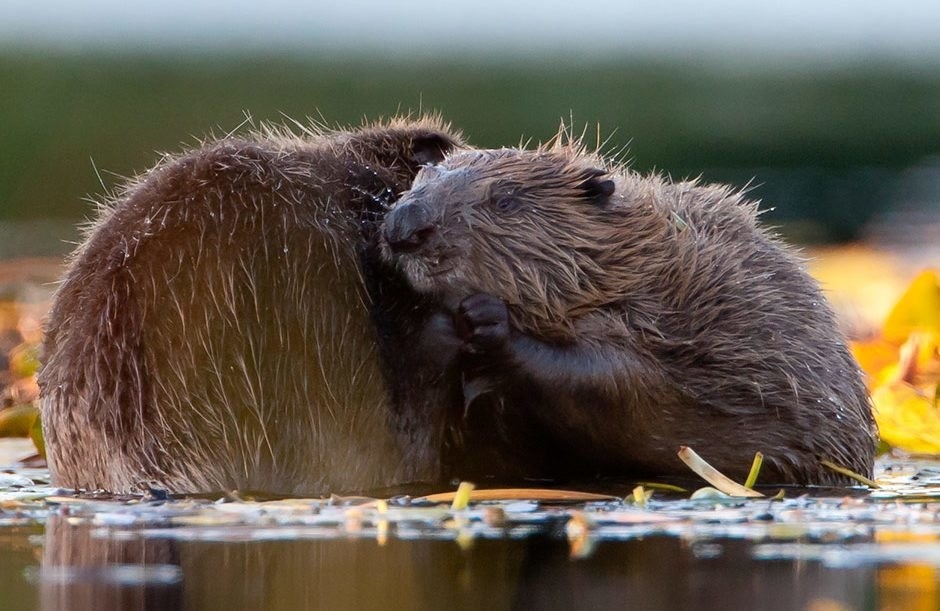It's been announced that Michael Gove, the environment secretary, is to release four beavers near the village of Lydbrook, in the hills above the River Wye in the Forest of Dean.

Not personally, you understand. But he has approved it.
Beavers are large, semiaquatic rodents, one species of which is native to northern Europe and went extinct in Britain in the 16th century. Lydbrook will be getting a breeding pair of adult beavers and their CUTE LITTLE BABIES, or kits.
This isn't the first time beavers have been reintroduced to Britain. They've been brought back in Scotland and Devon already.

In 2009, 16 beavers from Norway were given a home in Knapdale Forest, Scotland, where they rapidly became entirely at home. They're soon to be given protected species status.
And in 2011, a small group was introduced in a fenced-off part of west Devon. Then, in 2015, some more were let loose in the River Otter, also Devon, as part of a five-year trial.
And basically, it's been a huge success! Beavers create natural wetlands, improve local wildlife, probably reduce the risk of flooding, and improve water quality.

That's because in small streams, they create dams, which in turn create ponds. (Eurasian beavers only do this in smaller streams, so that they have deep water. In bigger rivers, they don't need to. North American beavers, which live in the dams themselves rather than holes in the riverbank, create dams in much bigger rivers.) They also dig channels and sluices to connect ponds and generally manage the waterways.
"A beaver is what is called a keystone species," George Monbiot, the writer, environmentalist and "rewilding" advocate, told BuzzFeed News. "An animal that has a far bigger impact on its environment than its numbers alone would suggest. And the impact of beavers on other wildlife is entirely positive.
"When they come into a river system, they create pools and ripple sections, because of the dams and channels they build. There's lots of evidence that where you have beavers you get more fish, and bigger ones; more waterbirds; more insects, otters, amphibians.
"And potentially, you have less flooding downstream." Which, given the floods in large parts of southwest Britain in recent years, sounds like a good thing.
That's been the experience both in Scotland and in Devon.

A spokesperson for the Devon Wildlife Trust told BuzzFeed News that while it was too soon to have strong evidence from the River Otter trial, the enclosed west Devon experience was very positive. "You can literally see the improvements in water quality," he said. "A bottle of water from upstream is brown; from downstream, filtered through the dams, it's clear."
And they've created a network of dams and ponds, which retains water in heavy rain and releases it gradually. "It's a much greater capacity to store water," said the spokesperson, "so it should reduce flooding downstream."
And in the wetland areas that the beavers have created, they've seen "a big increase in aquatic invertebrates, a 1,000% increase in frogspawn, which is great for things that eat frogspawn. The height of vegetation has increased. The number of bat species has increased because there are loads more insects for them to feed on."
The Scottish Wildlife Trust's director of conservation, Susan Davies, said: “Beavers are fantastic natural engineers. We’ve seen first-hand in Knapdale how a relatively small number of animals can create large new wetlands and improve riparian woodland.
"They also bring wider benefits by creating homes for a range of other species, from insects and birds, to otters and water voles."
And, on the whole, people really like having beavers in their local area. They're just really cool, big, exciting animals, and you don't see many like them in Britain.

The Devon Wildlife Trust spokesperson said the local community had really taken the River Otter beavers to heart: "A local hardware store has books on sale to raise money for them. The local schools have projects. My local pub has a beaver beermat. And in the summer they were very visible with their young, you'd see 20 or 30 people standing on the bank watching them swimming with their young."
And Davies of the Scottish Wildlife Trust said "beaver tourism" is "providing a boost to the local economy as these charismatic animals have become a strong draw for visitors to mid-Argyll".
On one occasion in Devon a dam made a pond on a farmer's land, and it was easily removed with a "beaver deceiver", a pipe stuck through the dam that reduced the level of water behind it so the beaver thought the dam wasn't working and wandered off. Other than that, farmers seem to have been largely OK with it. "Two of our beaver sites were on dairy farm land," said the spokesperson.
"I went in the summer to see the beavers on the River Otter," said Monbiot. "And it was quite moving. They come out in the evening, and there was a pilgrimage of people, walking about a mile down the bank to where the beavers were.
"And they all stood there in total silence, an almost religious awe. On the bank they look pretty ungainly, but in the water they're halfway between a dolphin and a hippo. They're big, about a metre long, and heavy, just amazing creatures."
